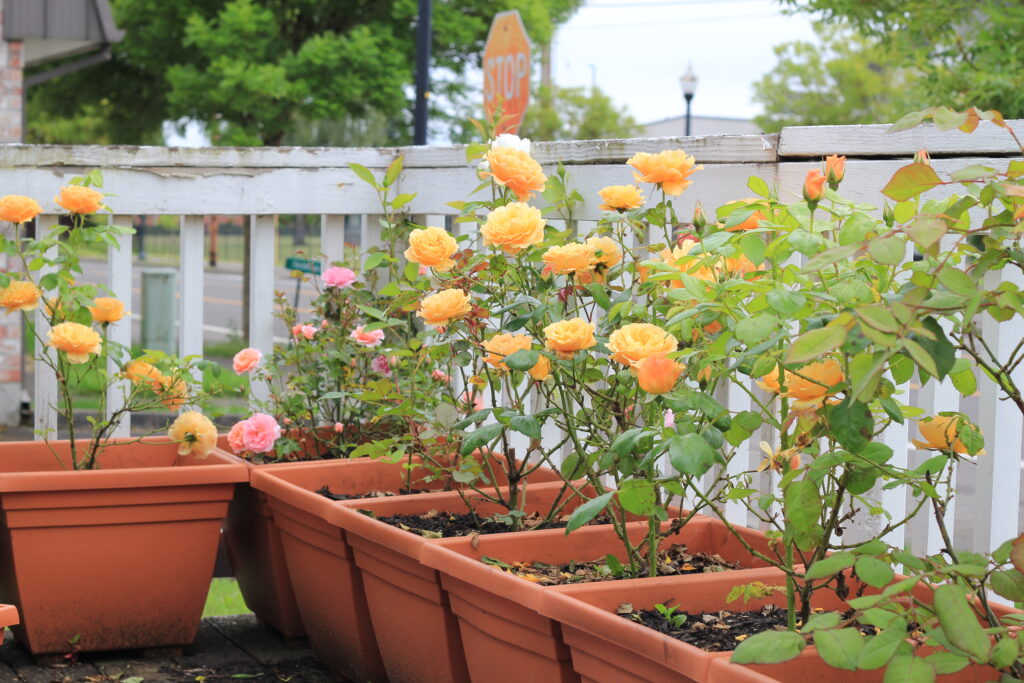
Plastic containers are the cheapest way to get your roses growing. They are cheap and provide a durable medium to last the elements. This last year (2021-2022) was the first full year in having plastic containers for our roses. Below is a list of what we learned about our first year with these plastic planters:
- Granular Fertilizers – Don’t use them!!! I learned this lesson immediately after applying my first dose of granular fertilizer to my plastic container. It took two weeks, but the ramifications of use were clear. My plants experienced fertilizer burn and I realized that I needed a water soluble solution that could exit the soil with watering intervals. One of my favorites is Alaska Fish Fertilizer.
- Heat – The insulation value of plastic containers is limited. After a period of extended hot days, your roses will gulp-up all the water. Even with mulch, water consumption will be increased in these containers.
- Soil Type Matters – Make sure to get a soil that drains well. Having water sit in the soil will lead to a decrease in health in your plants. I used a soil that did well in growing plants from seed and it did not perform well in growing roses. Root-rot and fungus gnats became prevalent. Take your soil choice very seriously.
- Drainage Matters – In rainy environments drainage is key. Roses do not like to sit in water. If you do not have proper drainage in your planter, your roses WILL experience some form of disease or stunted growth.
- Durability – Although plastic containers can take hits, if you hit the sides at just the right angle and amount of pressure, it will break out and you will have a mess of soil that bursts out of the side. Take special care when using sharp tools near the sides of plastic containers.
For this next year, my wife and I decided it would be wise to give our plastic planters a make-over by adorning our roses with wonderful companion plants. These companion plants will provide beauty when your rose is in between blooms. This next year we are going to be testing companion plants to go with our roses to see if we can get maximal growth while limiting the amount of water run-off we have due to heat stress.
Example Companion Plants we are considering:
- White Alyssum
- Lobelia
- Sedum
- Creeping Juniper
- Dianthus
- Creeping Phlox
- Lithodora
To learn more, please check out one of our favorite videos that comes from Heirloom Roses: